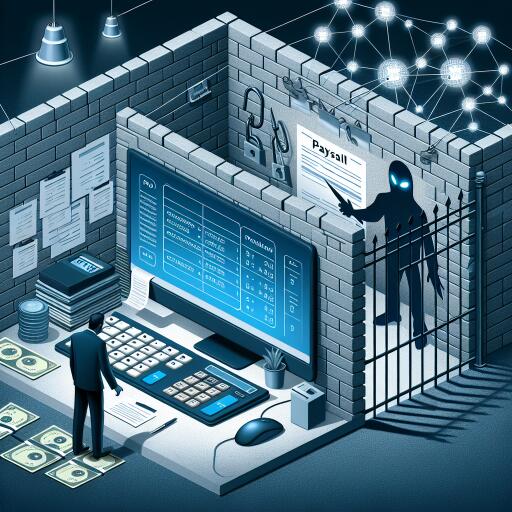Unveiling the Vulnerability: Payroll Systems at the Cybersecurity Crosshairs
With the digital age surging forward, cybersecurity breaches have unfortunately become part of the landscape for businesses globally. One such revelation has been brought to light by a discovery involving I-Soon, a private contractor in pursuit of Chinese government contracts. This incident, documented by leading cybersecurity firms SentinelLabs and Malwarebytes, highlights how hackers managed to infiltrate over a dozen government systems, throwing a stark light on these ongoing cyber warfare battles.
Payroll: A Cybercriminal’s Gateway
The breach experienced by the UK Ministry of Defence, as unveiled by the BBC, serves as a stark example of how payroll systems are increasingly becoming targets for cybercriminals. Insights from The Global Payroll Association (GPA) underline this trend, emphasizing the deliberate choice by hackers to exploit payroll software as a key entry point into companies’ defenses.
In the ever-evolving landscape of cybersecurity, companies are shifting their strategies towards prevention as a primary form of defense against cyberattacks. The UK cybersecurity software development industry, poised to exceed £1.1 billion in annual revenue by 2024, marks a significant leap — a 129 percent growth in just a decade. This upturn reflects the escalating measures businesses are taking to fortify their digital fortresses.
The Achilles’ Heel in Payroll Systems
Time and again, vulnerabilities in payroll systems have been identified and exploited to the detriment of several organizations. Notable incidents include the attack on Parasol, a UK contractor accountancy firm, resulting in significant personal data theft in January 2022. Other victims include the Brookson Group, Kronos, Frontier Software, and the Phoenix Pay System, among others. Even global entities like WH Smith, Marks & Spencer, the BBC, Boots, and Jaguar have not been spared.
Navigating the Treacherous Waters: Fortifying Payroll Systems
Several common cybersecurity lapses can render payroll systems vulnerable, including the use of non-reputable software, weak authentication processes, neglected system check-ups, inadequate data encryption, and a general lack of cybersecurity awareness among employees. Addressing these weaknesses necessitates a multi-faceted approach:
- Implementing and enforcing strong authentication measures.
- Conducting regular and thorough security audits and updates.
- Ensuring data encryption and secure storage practices.
- Promoting continuous cybersecurity education and vigilance among all employees.
Melanie Pizzey, CEO and Founder of the Global Payroll Association, stressed the significance of escalating cybersecurity investments in an exclusive chat with Digital Journal. “The recent MoD breach underscores the perpetual threat posed by cybercriminals,” Pizzey remarked, advocating for heightened vigilance and proactive security measures across all organizational tiers.
She further emphasized the critical role of payroll service providers in this cybersecurity matrix, considering their access to sensitive employee data. Organizations are urged to meticulously evaluate and select payroll providers that ensure the utmost security and data protection.
Conclusion
The continuously evolving cyber threat landscape mandates a robust and dynamic approach to cybersecurity, especially concerning payroll systems. As businesses grow and digital transformation deepens, the prioritization of cybersecurity practices is not just advisable, but imperative. Ensuring the integrity of payroll systems can safeguard not only sensitive employee data but also the overall health and reputation of the organization itself.
As these threats become more sophisticated, so too must our defenses against them. By understanding the vulnerabilities and actively seeking to mitigate them, businesses can stay one step ahead in the digital age’s ongoing battle against cybercrime.








